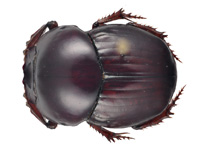Abstract
Deontostoma tridentum n. sp. is described from epibenthic (Brenke) sledge samples obtained from the continental slope of New Zealand at 570 and 1007 m water depths, and details of the ultrastructure are investigated using scanning electron microscopy (SEM). D. tridentum n. sp. is characterised by having a large buccal cavity with greatly reduced or inconspicuous odontia, one large dorsal onchium and two smaller subventral onchia, cephalic capsule without interlobar incisions with posteriorly-directed arms, ventral pre-cloacal supplement situated 200–215 mm anterior to cloaca, and gubernaculum with triangular crurae and curved proximal portion. Deontostoma tridentum n. sp. can be differentiated from all species of the genus based on the presence of two subventral onchia in the buccal cavity (absent in all other species). It is most similar to D. coptochilus in the presence of a large buccal cavity with a prominent dorsal onchium, structure of the cephalic capsule, and structure of the microlabia (i.e., subventral microlabia completely divided by mandibular ridge and dorsal microlabium not completely divided by mandibular ridge). D. tridentum n. sp. differs from the latter in the presence of crurae (absent in D. coptochilus), absence of ocelli (present in D. coptochilus), and in the position and structure of the ventral pre-cloacal supplement.

